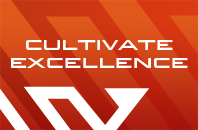Resources
|
THE FINANCIAL IMPACT OF DEVELOPING CRITICAL COMPETENCIES |
|
By Justin Albertson, Leadership Development Consultant & Exectuive Coach, The Vaya Group
|
| Download PDF |
When a leader at any organization wants to make an investment of company time, resources and money, he or she goes to great lengths to build a data-based rationale for why the investment makes “good business sense.” However, while a common practice among those in marketing, engineering and finance, it’s a relatively new science for HR and talent professionals. Until now, many HR execs have only scratched the surface of understanding what conditions lead to effective performance and how to align talent practices to business outcomes.
But what if an organization could show evidence that by improving a specific competency among its sales representatives, each rep could produce an additional $860,000 annually?
Below is an example of how a Fortune 500 organization did just that using its competency model and the data collected from a competency based talent assessment.
Situation:
About a year ago, a major medical device manufacturer approached The Vaya Group about a dilemma it was having surrounding its Technical Specialist (TS) and Sales Representative (SR) positions. Many SRs started with the company as TSs before assuming responsibility for sales. Because the roles involve many of the same duties—conducting product demonstrations, responding to customer questions, keeping customers abreast of industry developments and developing relationships with medical personnel—the organization thought it was a no-brainer to promote top-performing technical specialists into sales reps.
But as time passed, the company realized the strategy wasn’t working. Although some of the individuals promoted from TS to SR performed well under their new title, many others did not. Anxious for a solution that would help make their promotion decisions more accurate and consistent, the medical device company approached Vaya for help.
Solution:
In order to identify differences between the TSs and SRs that could impact job performance, Vaya consultants assessed middle and top-performing individuals from both roles in a blind study using the customer’s s pre-existing competency model. Made up of 16 competencies such as influencing, rapport building, and decision-making, the model identified the traits, skills, and behaviors that the organization deemed most critical for success in both positions. After conducting two-hour phone interviews with TSs and SRs, Vaya was able to identify several key differences between the roles. Although both groups displayed high technical skills and accountability, the SRs displayed superior selling and business acumen skills, while the TSs displayed better rapport-building, customer care and teamwork skills.
Afterwards, to test the validity of the assessment, Vaya used the data from the interviews to sort each participant as either a top or middle performer. Based solely on the data collected from the assessment, Vaya was able to accurately categorize 78 percent of the incumbents as either top or middle performers as compared to the company’s performance measures.
Next, Vaya consultants broke the data down even further by identifying the competencies that distinguished the top from middle performers for both TSs and SRs. As one would suspect, the top TSs displayed superior people skills: listening, rapport building and customer care when compared to their middle-performing peers. In a similar pattern, the top SRs distinguished themselves from the middle-performing SRs with much stronger selling and business acumen skills: territory planning, qualifying opportunities, influencing and competitive drive.
Results:
With detailed scorecards on the competencies of both TSs and SRs, The Vaya Group was able to see that the most successful SRs measured in the study—those who won the company’s “Gold Circle” award for sales performance between 2010 and 2012—had strong scores in five critical competencies: territory planning, qualifying opportunities, influencing, time and priority management, and accountability for results. Of these five, the top performers scored highest in territory planning and qualifying opportunities.
From the study, Vaya consultants identified a strong correlation between SR territory planning skills and sales revenue generation. Using linear regression, Vaya developed a model to illustrate the potential impact of SR competency improvement on revenue earned. With this model, Vaya determined that if an SR who struggled with territory planning became proficient in just this single competency, they alone could produce an estimated $860,000 of additional revenue for the organization. Put more broadly, if the organization applied a targeted development approach that focused on its highest impact competencies, it could equip SRs to increase sales revenue production 15 percent on average.
Seeing Green
Armed with the data above, Vaya’s client has a much clearer understanding of the competencies needed to drive success for its TS and SR positions, which has helped bring more accuracy and consistency to the hiring process. By creating development guides, training curriculum and coaching strategies around territory planning and the other top competencies identified in the study, the organization can ensure that they’re developing their talent in a way that will help them stay competitive and increase the bottom line. Ultimately, through the right research and data analytics, organizations can help take the guesswork out of optimizing talent and tie their HR initiatives to positive and powerful business outcomes.
Download The Application Study PDF ![]()
Learn More:
The Vaya Group provides comprehensive talent solutions to several leading organizations, including CitiGroup, AstraZeneca, Hewlett-Packard, and General Electric. Call us today at 630-906-3046 to discuss your talent optimization objectives and learn more about how we can fuel your success with our effective competency models, executive assessment, leadership development, talent analytics and our exclusive Talent Optimization Framework™.
